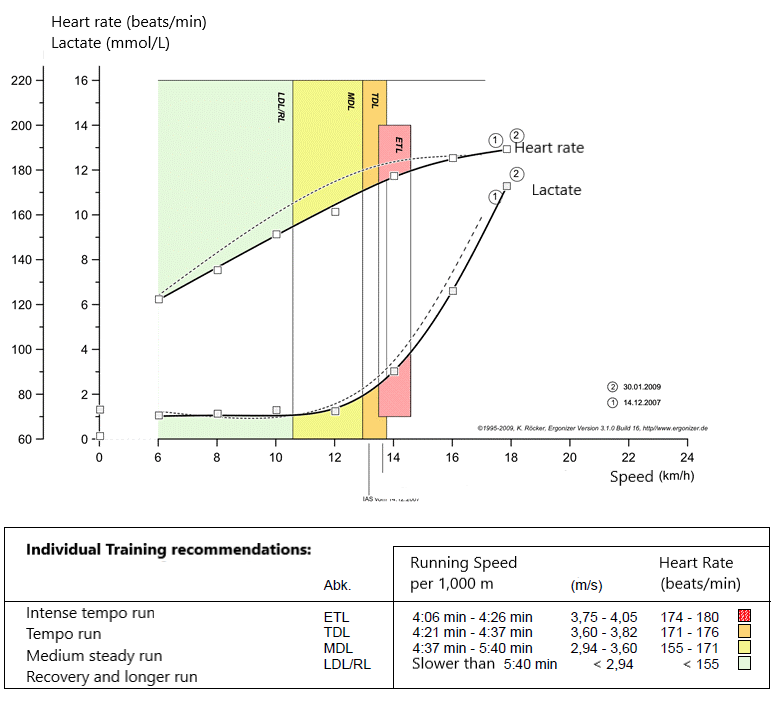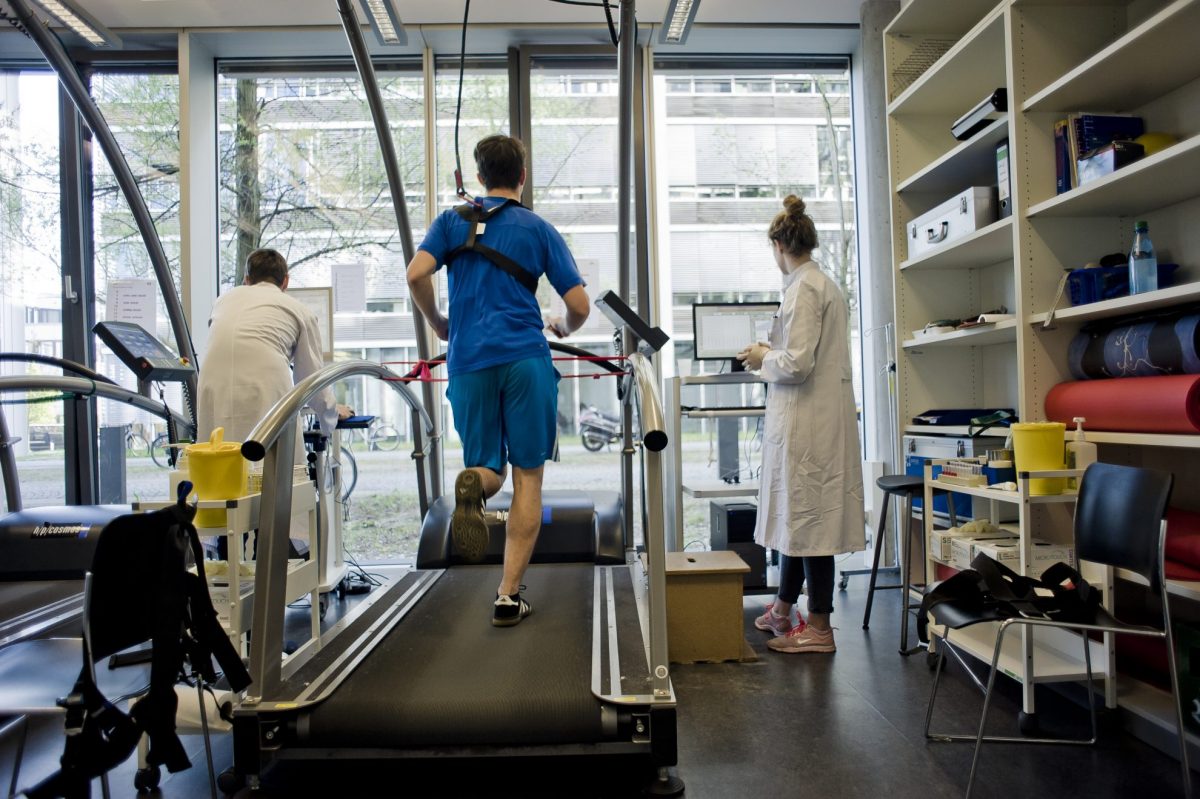More and more runners are undergoing regular performance tests, because performance diagnostics is the basis for targeted and effective training with individual training control. Through the sport-medical analysis of your current fitness level, you can plan your peaks in the short and long term. Reliable tests with reliable results are a requirement for the monitoring of performance development and effective training control.
For a long time, the Conconi test was popular, in which heart rate is used to determine your threshold. However, because this is very individual and has multiple variables for runners, the test is often incorrectly interpreted and runners therefore train in the wrong heart rate zones.
With the lactate level test, the lactate concentration in the blood is analyzed in addition to the heart rate, which makes it much more meaningful. Lactate production increases as soon as the oxygen supply through respiration is no longer sufficient for energy production in the muscle. Consequently, the muscle cells must increasingly obtain energy via the anaerobic energy supply processes. This leads to a significant increase in the lactate concentration.
Lactate level testing should be performed as sport-specific as possible: Runners should ideally do this on a treadmill. Starting at a low running pace, the intensity is gradually increased (usually after 3 minutes) up to the individual maximum power. The goal is to run through as many intensity levels as possible. At the end of each stage, a drop of blood is taken from the earlobe to determine the lactate concentration. In addition, the heart rate and the subjective feeling of exertion are recorded using the Borg scale.
By the course and rise of the blood lactate concentration statements can be made about the energy metabolism situation. The later the lactate rises, the better the endurance performance. If you can continue running for a long time despite high lactate values, this indicates good stamina. This is particularly important for middle-distance runners.
The determination of the individual anaerobic threshold is used to define the different training zones and heart rate zones. Depending on the goal or running discipline, the training can now be put together as optimally as possible.
A performance test is suitable for athletes of all levels. Whether beginner or professional, everyone can benefit from the determination of individual heart rate zones: Be it for fat metabolism training, weight reduction, increasing fitness or for competition preparation.

***************************




